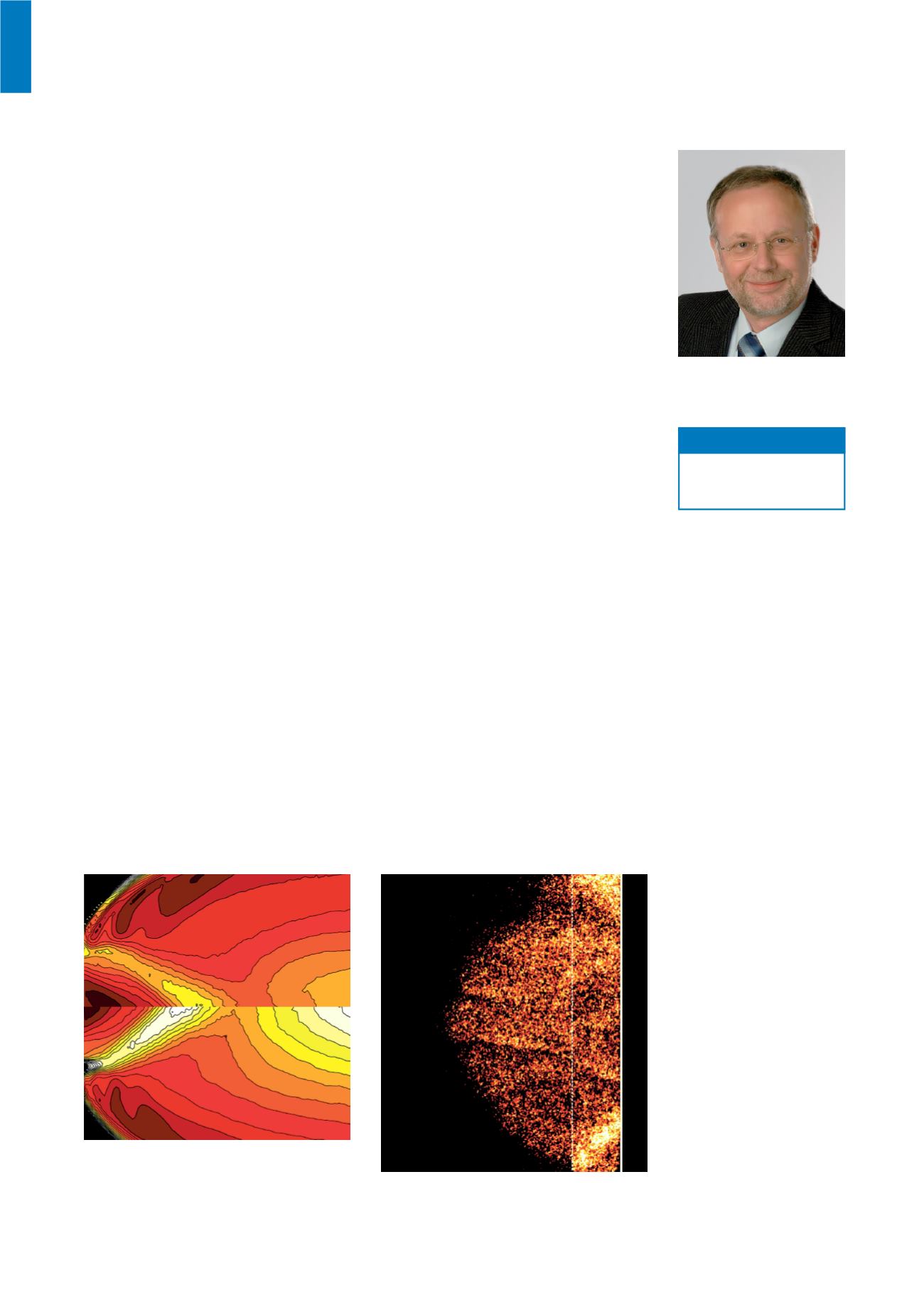

Thermodynamics
233
Thermodynamics
Technology-driven thermo-fluid dynamics research
Prof. Dr.-Ing.
Thomas Sattelmayer
Combustion Emissions and Reliability
1. Boundary Layer Flashback
in Premixed Combustion of
Highly Reactive Fuels
Motivation and Objectives
If modern gas turbines are operated on
highly reactive fuels such as hydrogen,
flame flashback inside the burner’s wall
boundary layer is a major issue which
limits stable and safe operation.
www.td.mw.tum.de Bassett@td.mw.tum.dePhone +49.89.289.16217
Contact
n
Our research guideline is the proposition that scientific research in an
engineering school should be focused on problems with high techno-
logical relevance. A key to realizing our mission is the close cooperation
with industry in general and in particular with partners who – developing
their top-class global products at the leading edge of technology – have
encountered barriers that might be overcome by fundamental research.
Our partner industries are optimizing their
technologies towards a lower carbon foot-
print, integration with renewable power
sources and environmental compatibility.
Their research needs are reflected in our
three research clusters: The increase of
fuel efficiency and operational flexibility
of gas turbines and large reciprocating
engines at low pollutant emissions
requires fundamental research on pol-
lutant formation and emission, reliability,
combustion instabilities and multi-phase
phenomena. Safety issues in nuclear
power plants and in the process industries
are addressed by our work on detonation
and on two phase flows. Finally, further
research is devoted to the grand challenge
of providing clean water to the world.
The appreciation of our technologically ori-
ented research approach in the technical
community is reflected by two ASME Gas
Turbine Awards for the best publication
of the year on gas turbines and numerous
best paper awards which our research
group has received during the past two
decades from several organizations.
A detailed understanding of the underlying
physical mechanism as well as tools to
predict the flashback limits are of great
interest in the design of gas turbine
burners.
Approach to Solution
Experimental studies including laser
diagnostics have been performed to
analyze the mechanism of boundary layer
Turbulence distribution of a hydrogen-air flame at near
flashback conditions from particle image velocimetry
(PIV). Upper and lower parts represent different
equivalence ratios.
Hydrogen-air flame at flashback from OH* chemi
luminescence imaging


















